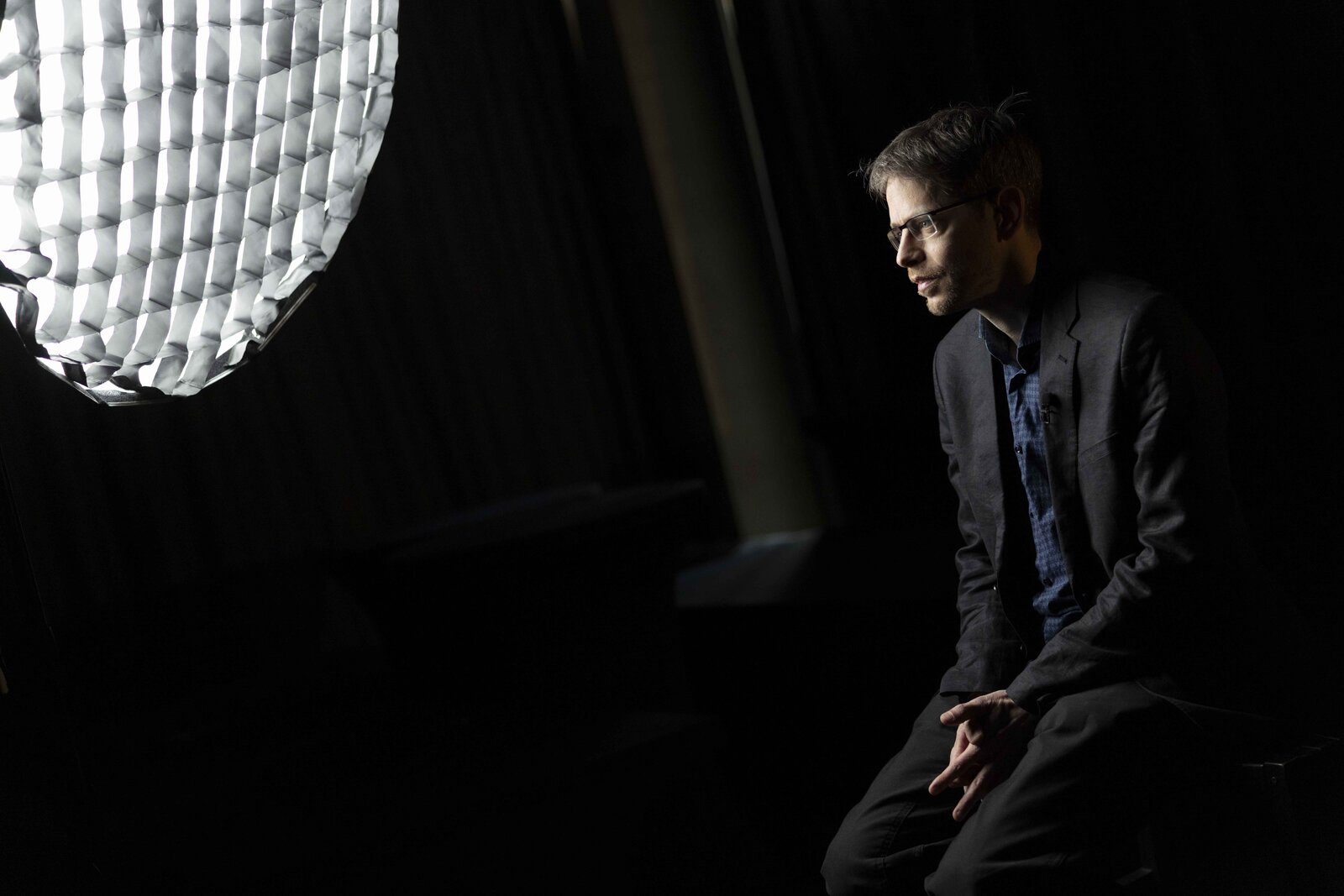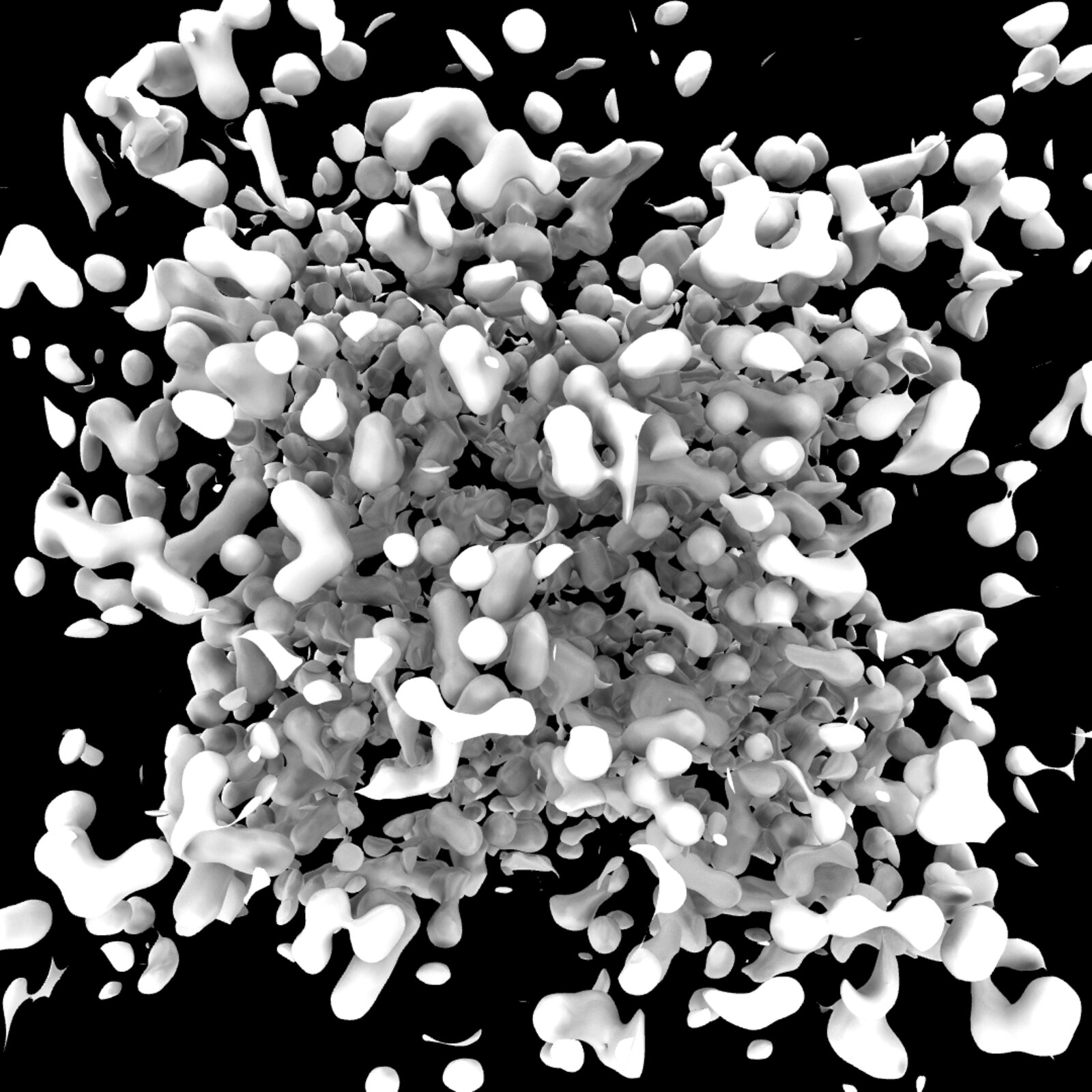BABEL – Interview with Ivó Kovács and József Iszlai
The BABEL series, currently on display in the Hexagon, features Homogenous, an audiovisual journey that explores the dynamics of space filled with noise - an infinite, ever-changing structure that is both chaotic and safe. We spoke with the creators, Ivó Kovács and József Iszlai, about the concept behind the project, artificial intelligence, and their reflections.

Ivó Kovács
The first question is for Ivó. How did you get into digital art? In your opinion, what does it take for someone to become a digital artist?
Ivó Kovács (video): At the Academy of Fine Arts, I studied painting and created abstract works, but I wanted to bring them to life. That’s how I got into 3D animation, where I could construct spaces that would have been impossible to capture with traditional video technology. Initially, I took a year off for a student job, where they were looking for painters for three Hungarian-American feature films. During this time, we went through the entire repertoire, from creating faux frescoes to retouching footage. We wanted to understand, in a self-taught manner, whether digital art follows any specific rules compared to traditional art. But, in the end, it still comes down to building an image. You can teach a mindset; for a few years, I even taught projection mapping. However, software learning is an ongoing process: you have to keep up with it on a daily basis. So that self-taught feeling never fades, and for that, I’m grateful.
What techniques and technologies do you use in your work?
József Iszlai (music): When it comes to music, software is secondary for me. Technology always offers fresh possibilities, but even a simple acoustic instrument can do the same. Personally, I expect my technological toolkit to surprise me during the recording process - that’s why I value improvisational setups and experimenting with different approaches.
Ivó Kovács: I used real-time 3D programs, into which I could import elements generated with traditional 3D software. The goal was for everything to be generated at the moment of rendering, ensuring that the computation time remained manageable even at extremely high resolutions. This helped keep the workflow smooth and efficient.
How did the core idea of Homogenous come about? What inspired you to visually represent space, symmetry and asymmetry?
The initial concept was based on a visual interpretation of the Borges short story, using (video) noise as a metaphor: just as the infinite Library of Babel contains every possible text, noise could, in theory, contain every possible image in its elements. This was meant to be a spatial noise that condenses, and where it does, traces of meaning emerge. Naturally, I approached this with a generative process in mind, one that allows infinite variation and can only be interrupted but never truly finished. This is the third iteration of the work, evolving from the initial noise storyline over two and a half months. It has turned into a rather traditional narrative, but that’s the way it goes for any creative professional who considers the audience’s perspective.

Ivó, what do you think viewers feel or think while watching the piece? What experience or thought would you like them to take away from it?
There is an old axiom: "if you break information down to its elements, it loses its meaning." It is this sense of disillusionment that radiates from Borges’ story: as if everything has already been written, yet nothing truly has. Or, if something can describe anything, then in the end, it describes nothing. This is something we can relate to in our modern world: just think of today's AI chat programs. While these AI systems generate seemingly new texts or images from pre-existing data, the human mind still secretly hopes there are unknowns left to discover. This hope feels like an avant-garde utopia in our dystopian reality. It is this optimism that I wanted the piece to lead towards.
At the beginning of the video, almost as a prelude, we see a short “evolution”: noise condenses into space, expands, complicates, structures itself, and develops until, by the end of the scene, it plays with physical space and forms itself into triangles. This is the Hexagon’s space, a symbol of rationality, with its attributes represented by the red, green and blue lines marking the x, y and z axes, the Cartesian space. But then this rational structure frays and tears apart, like a veil above the sea of instinct. Immersive art is a living medium; it only has an impact if you experience it in the moment. It cannot be fully conveyed in a film or description: like theatre, it exists in the "here and now," which is why it naturally reflects on the present.
From a video perspective, symmetry is a way to avoid making a statement. It simply repeats itself in all directions, filling the space. But if I approach it critically, should aesthetics make a statement? Or, to put another way, can pure spectacle become its own justification?
This also aligns with Borges’ idea of an infinite library stretching in all directions. One could say that symmetry represents a post-rational state - beyond meaning, beyond words, even transcendent. Or, if I take a more pessimistic view, it is pre-rational, tribal and instinctive. Even as we witness the collapse of the rational world that once allowed us to think about such concepts, the video ends by fading into white light - so that, in the end, the viewers see each other.
It may be a cliché, yet it remains true: the world has always been a cold, indifferent place. Our task is to humanise it.